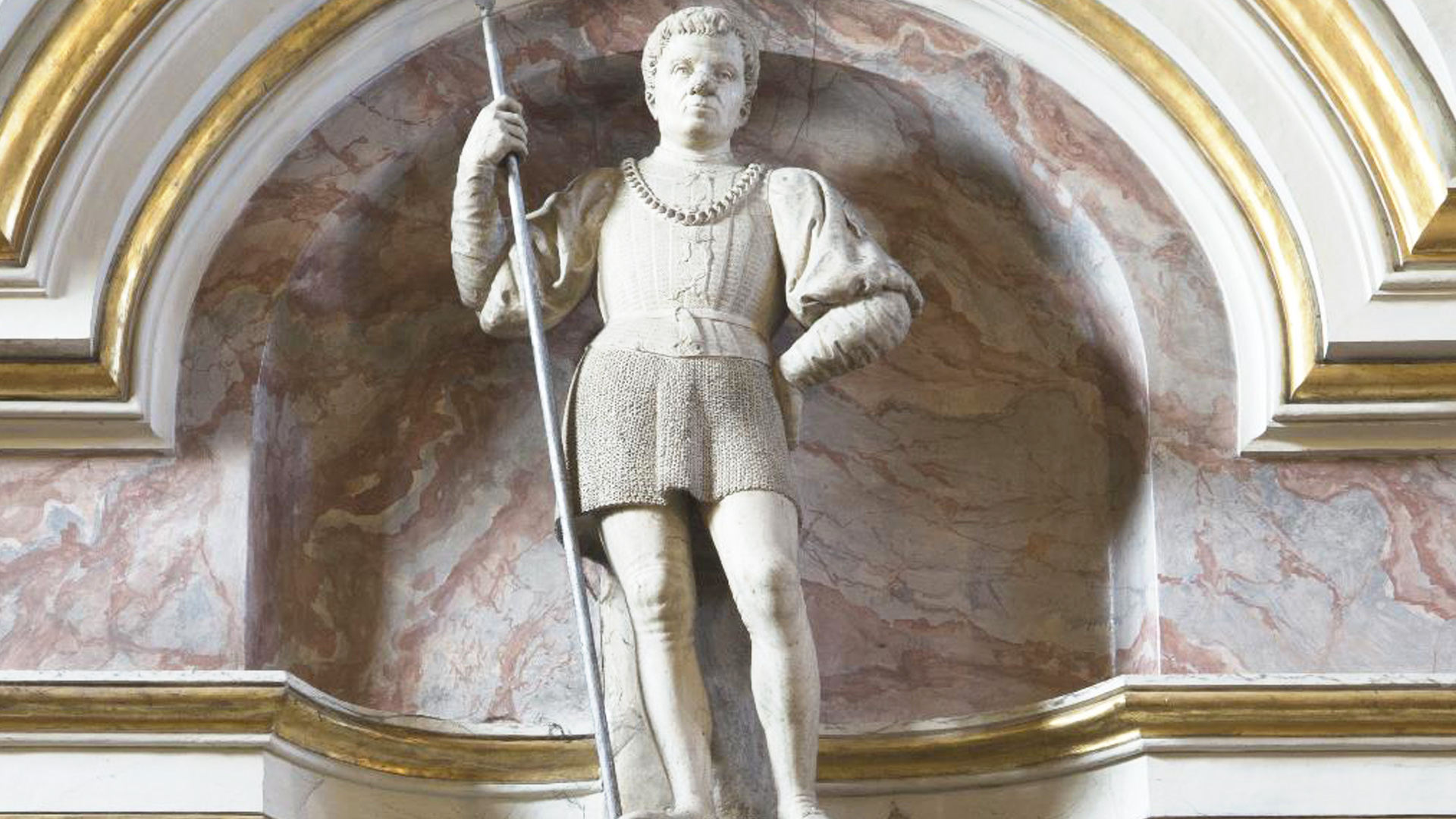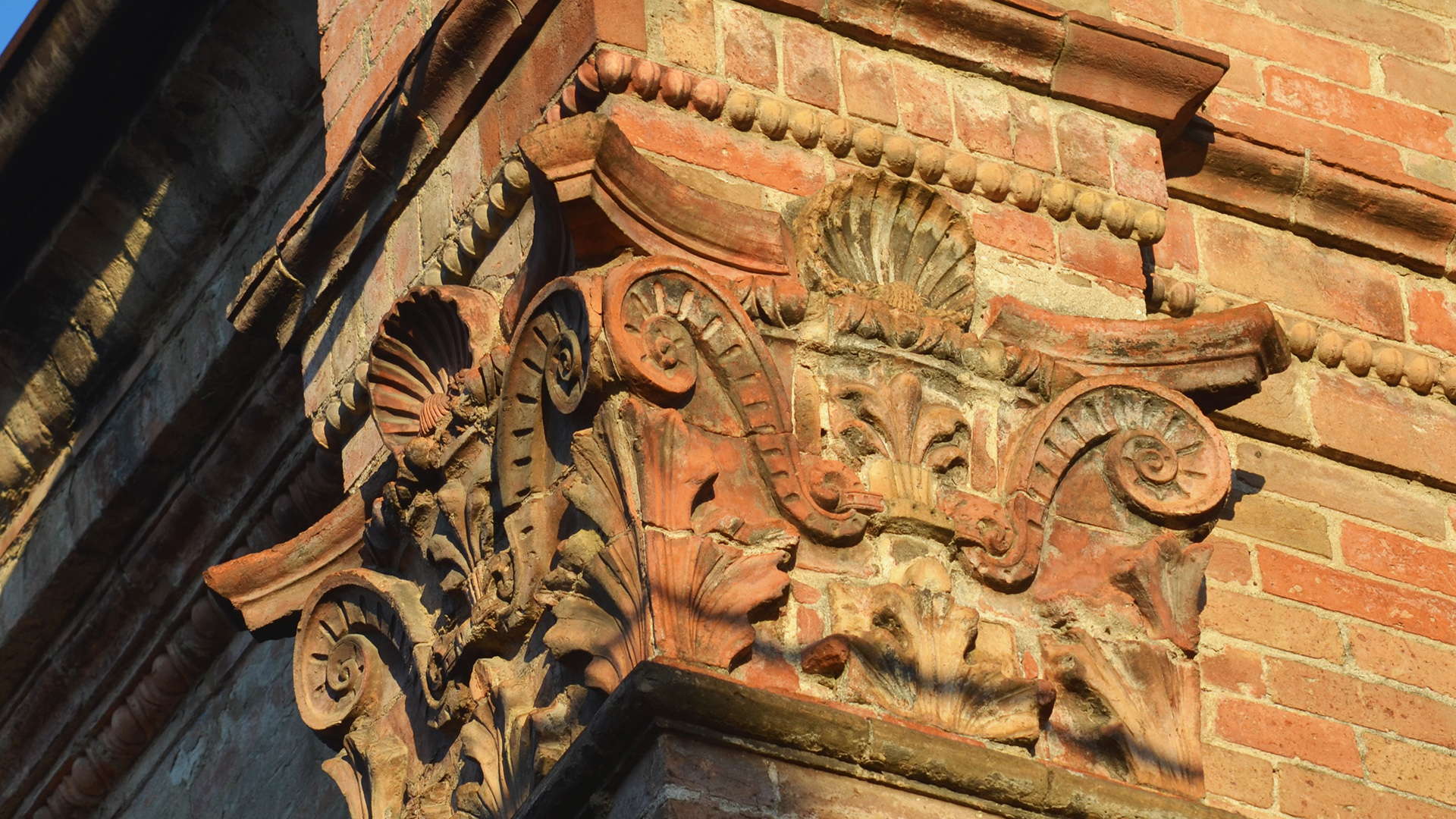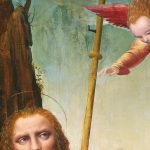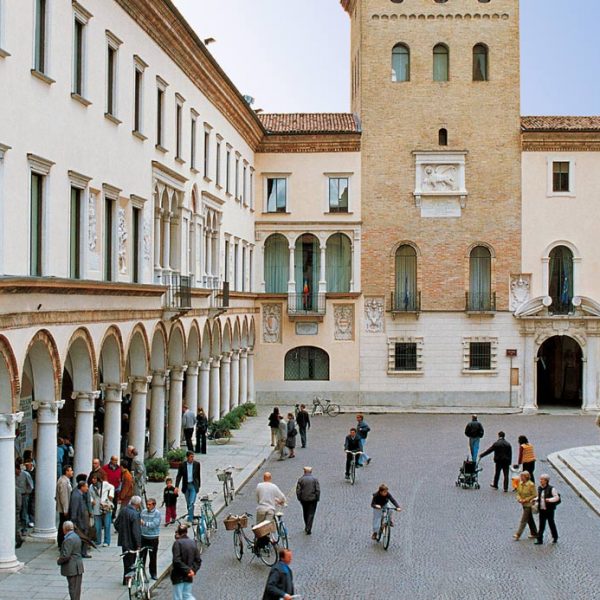 Tutti gli itinerari
Tutti gli itinerari
Tracce del genio di Vinci a Crema
Crema is a city full of culture and history that over the centuries has hosted famous people and has been influenced and fascinated by them. Leonardo da Vinci (Anchiano, near Vinci, April 15, 1452 – Amboise, May 2, 1519), who never had a direct relationship with the city, was one of them.
However, there are many personalities related to him who had to do with the Cremasco area, not to mention the artists who, despite not having personally known the Tuscan, were deeply influenced by his ideas and enriched Crema and the territory with their works. The Cremasco modeler Agostino de Fondulis, for example, was present as a witness to the notarial deed (25 April 1483) with which the minor conventuals of San Francesco Grande in Milan commissioned the Virgin of the Rocks from Leonardo.
The itinerary that we propose to you in the footsteps of Leonardo da Vinci in Crema starts from the Cathedral.
The Cathedral
The current building in Lombard Gothic style is built between 1284 and 1341 on a pre-existing church. Over the centuries the building has undergone numerous transformations especially inside which has gradually been enriched with chapels, altars and works of art. Most of these are removed during the restorations of the years 1952-59.

In the church there are still some Renaissance paintings by Vincenzo Civerchio (Crema, about 1470 – about 1544): the polyptych with the Saints Sebastian, Roch and Cristopher (1519),

the organ doors depicting the Annunciation (1523) and the large altarpiece of the high altar depicting the Assumption of the Virgin (around 1530-40) partly repainted by the painter from Crema Mauro Picenardi (Crema, 1735 – Bergamo, 1809). The marble statue of Saint Nazarius (about 1475-80) by the sculptor Pietro Antonio Solari (Milan, about 1455 – Moscow, 1492) from the Cathedral of Milan and donated to Crema in 1959 by Cardinal Giovanni Battista Montini, the future pope Paul VI, is worthy of attention.
Popolare di Crema Bank
The current construction was built in 1967-68 by demolishing the ancient Palace of Ottaviano Vimercati which kept inside three ceilings decorated with tablets, made in three different moments between about 1480 and 1500. These tablets have now become part of the collections of the same bank where we also note the presence of a painting by Vincenzo Civerchio (Crema, about 1470 – about 1544) depicting the Nativity dating back to around 1500.

Church of Santissima Trinità
The present construction is built in Rococò style between 1737 and 1740 on an earlier building attested since the 11th century.

Inside is the most important example of Renaissance sculpture in the Crema area: the Funeral Monument of Bartolino Terni (1518), work of the sculptor Lorenzo Bregno (Osteno, about 1475/1485 – Venice, 1523).

Vimercati Sanseverino Palace
Built from the fifteenth century, as evidenced by a ceiling with painted tablets present in a hall on the first floor and depicting male and female profiles, the palace belonged to Sermone Vimercati, a trustworthy man of Duke Francesco II Sforza, who was hosted here on the run from Milan in 1526. Sermon in 1520 had married Ippolita Sanseverino, daughter of a general of Duke Galeazzo Maria Sforza, combining his surname with her surname. The couple appears quoted in a licentious novella by the Dominican Matteo Bandello (Castelnuovo Scrivia, about 1484 – Bazens, 1561), prior of the convent of San Domenico in Crema in 1523, which has a Greek and a peasant as its protagonists. The palace was later enlarged by the son of Sermone, Marcantonio, and completed by his nephews Orazio and Ottaviano; it is shown today in late sixteenth-century forms. The main elevation, on Benzoni street, has a monumental portal with a curved broken tympanum containing the family crest; the windows of the noble floor are equally crowned by broken tympanums with togate or ancient armor busts. Beyond the entrance hall with sloping vault grows the courtyard, porticoed on three sides and connected to a garden bordering the former church of Santa Maddalena and Santo Spirito, owned by the family since 1830.

Ex Convent and church of San Domenico
The convent of San Domenico was founded in 1332 by brother Venturino de Apibus from Bergamo near a chapel dedicated to Saint Peter martyr, donated to the order along with some houses owned by the nobles De Mandoli. The current constuction was built between 1465 and 1471, incorporating the apses of the fourteenth-century church. Suppressed at the end of the eighteenth century, the complex changes destination several times and the former convent church now houses a theater.
The façade of the building, which is a hut and tripartite vertically, shows architectural features that are indebted to the model of the Crema Cathedral, with a gallery of arches supported by columns that follows the course of the two slopes. At the central span is a large circular window flanked by two mullioned windows, which in turn surmounts another gallery.
The interior has transverse pointed arches, set on half-pilasters with a truncated cone termination below the capitals. The arches are decorated with a black and white opus scutulatum motif, perhaps referring to the colors of the order; the intrados instead show fake painted ashlars.

The old refectory has in its round lunettes frescoed depicting Dominican Saints, the work of a Crema painter, dated around 1505. One of the two cloisters remains the arcades with terracotta polygonal pillars and a walled loggia on the first floor. From this church comes the canvas depicting the Baptism of Christ (1539) by Vincenzo Civerchio (Crema, about 1470 – about 1544) now preserved in the Pinacoteca of the Tadini Academy in Lovere.
In 1523 the tales writer Matteo Bandello (Castelnuovo Scrivia, about 1484 – Bazens, 1561) is prior of the convent.
Church of Santo Spirito and Santa Maddalena
The church, built starting around 1511 by the friars of Santo Spirito next to a hospice dating from the 13th century, is attributed to Agostino de Fondulis (Crema, about 1460 – about 1521). The fifteenth-century cloister with octagonal pillars remains from the hospital.

The church building, entirely in brick, has a façade divided into three parts by half-pilasters on tall pedestals; rectangular recesses contain niches surmounted by blind oculi, according to a scheme already used by De Fondulis in Santa Maria della Misericordia in Castelleone. Valuable are some details in terracotta, such as the elegant tabulae, the door and window frames, the capitals of the said type with S. scrolls. A high tympanum crowns the façade, reproducing some decorative elements and reinterpreting them. The left side, free, is marked by half-pilasters in proportional continuity with those of the facade. Even the polygonal lantern, visible from Buso street, has the sides embellished with terracotta geometric decorations. Purchased in 1830 by the Vimercati Sanseverino counts, the church is still privately owned.
From here comes the Lamentation of Agostino de Fondulis now in the parish church of Palazzo Pignano.

Church of San Giacomo
The current construction was built starting in 1512, but between 1723 and 1749 it was extensively remodeled to take on the current Rococò appearance. Inside there is a painting by Vincenzo Civerchio (Crema, about 1470 – about 1544) depicting the Baptism of Christ dating from around 1520.

Ex Convent of Sant’Agostino
The complex, now the Civic Museum, houses the convent of the observant Hermits from 1439 to 1797. Since 1422, the nobleman from Crema Tommaso Vimercati had allocated part of his inheritance to the Augustinians for the construction of a convent and a church in the city. Work began at the end of the 1430s, when Gian Rocco Porzi, the first prior of the community, arrived in Crema and was responsible for building the northern cloister. This is characterized by porticoes with pointed arches and overlooks the chapter house, which has a characteristic ribbed ogival umbrella vault. The southern cloister, wider, has porticos with arches always with a pointed arch. The refectory is set against it, frescoed by 1507 by Giovanni Pietro from Cemmo (about 1450 – about 1510) with decorations that, due to themes and iconographies, are influenced by the figurative culture of Milan at the end of the 15th century. In particular, the Last Supper punctually recalls the poses of the characters depicted by Leonardo da Vinci in the Last Supper of Santa Maria delle Grazie in Milan.

Civic Museum of Crema and Cremasco
In 1797 the convent of Sant’Agostino was suppressed. In 1811 the dome of the church was demolished and in around 1830 the rest of the sacred building was destryed. The two cloisters are used as barracks and this use is maintained until the Second post-War period when the structure hosts displaced families. In 1959 the complex was acquired by the Municipality to house the Civic Museum of Crema and Cremasco inaugurated on 21 May 1960.
The works exhibited in the Museum include:
– the table representing Saint Roch, the work of an unknown painter strongly influenced by the style of Bernardo Zenale (Treviglio, about 1463-68 – Milan, 1526) and Leonardo da Vinci;

– the fragments of the predella of the terracotta polyptych of the altar of Saint Mark already in the Cathedral of Crema, by Agostino de Fondulis (Crema, about 1460 – about 1521), datable to 1513;
– a ceiling tablet depicting a Male Portrait in Profile, dating from around 1490-1510, from Palazzo Benzoni (Crema, via Marazzi, 7), the work of a Lombard painter influenced by Bernardino de Conti (Castelseprio, 1470 – Pavia , 1523);
– a Madonna in terracotta by a sculptor from northern Italy, dating from about 1495-1500, from Santa Maria della Croce in Crema, a building yard directed by Giovanni Battagio (Lodi, about 1440 – about 1500);

– an almond-shaped table depicting Saint Francis, work of Vincenzo Civerchio (Crema, about 1470 – about 1544), dated 1505.
Vimercati – Zurla – Barbàra Palace
The building is now shown in six-eighteenth-century forms, the result of the restoration promoted by the Zurla family from the end of the seventeenth century. The foundation of the building dates back, however, to the fifteenth century and is to be referred to the Vimercati family: remains of the primitive construction are visible both on the façade, where a portion of masonry was freed with a fragment of a 15th-century jamb, and in the inner courtyard, where the four arcades of the portico are decorated with terracotta tiles which, although very integrated, have round with rosettes in the arches, friezes with griffins in the rings and shelves with shields in correspondence to the arch keys typical of the production of Agostino de Fondulis (Crema, about 1460 – about 1521).

Even the interiors preserved evidence of the late fifteenth century until the last century: in fact, from the halls of the noble floor comes a series of ninety-eight ceiling tablets, painted in tempera with male and female busts and heraldic motifs, sold in 1947 and currently exhibited at the Poldi museum Pezzoli of Milan.

Church of San Bernardino in città
The church of San Bernardino in the town is built starting from 1518, in the immediate vicinity of Piazza del Duomo, replacing an older convent of the Observant Minor located outside the walls, destroyed in 1514 during the wars between the Duchy of Milan and the Serenissima Republic of Venice. The church, already completed in 1534, has a single-vaulted nave, flanked by chapels, according to a typology spread in the Lombardy area during the second half of the fifteenth and early sixteenth centuries, although it is difficult to imagine the original architectural details of the raised, redecorated in later times. Cases like the one in Crema, where we find cross vaults both on the nave and on the chapels, rather than barrel vaults, seem to represent a mixture of cultures between the traditional simple transverse arches, the antiquarian tendencies and the now very distant echo of experiences like Santa Maria near San Satiro by Bramante in Milan and Sant’Andrea in Mantova by Leon Battista Alberti.
Inside there is the painting depicting the Annunciation realized around 1520 by Vincenzo Civerchio (Crema, about 1470 – about 1544), very repainted at the end of the nineteenth century by the scenographer Luigi Manini (Crema, 1848 – Brescia, 1936).

Church of Santa Maria della Croce
The origin of the sanctuary outside the town walls, along the road that leads to Bergamo, is due to the invocation and appearance of the Virgin to Caterina degli Uberti, mortally hurted by her husband in April 1490 and survived until the following morning to denounce the fact. On the site, now included in the crypt, the first of many attested miracles takes place on the day of Holy Cross (3 May).

The project, sponsored by the town institutions, is entrusted to Giovanni Battagio, already active at the Incoronata di Lodi and Santa Maria della Passione in Milan. The central core of the building is octagonal (fig. 13) and develops in height showing the use of the so-called Roman-style party, that is to say trabeate half-columns framing arches on pillars, to which is added a second level with windows with mullioned windows flanked by candelabra columns and the pavilion vault. All the sides of the octagon are broken through by chapels, which on the orthogonal axes are configured as further centralized cruciform bodies aggregated to the central nucleus and clearly identifiable also outside (fig. 14). The building, very modern for its time, also affects the imagination of Leonardo, who designs a church with a similar layout in the Codice Atlantico (f. 547v) (fig. 15).
Inside there is a terracotta relief depicting the Madonna with Child, a serial replica of a marble sculpture attributed to Antonio Rossellino (Settignano, 1427/28 – Florence, 1479/80) preserved in the Hermitage of Saint Petersburg and the altarpiece of major altar depicting the Assumption of the Virgin, work of Benedetto Diana (Venice, 1460 – Venice, 1525), dating from around 1501.


Info
The itinerary starts from Piazza del Duomo


































